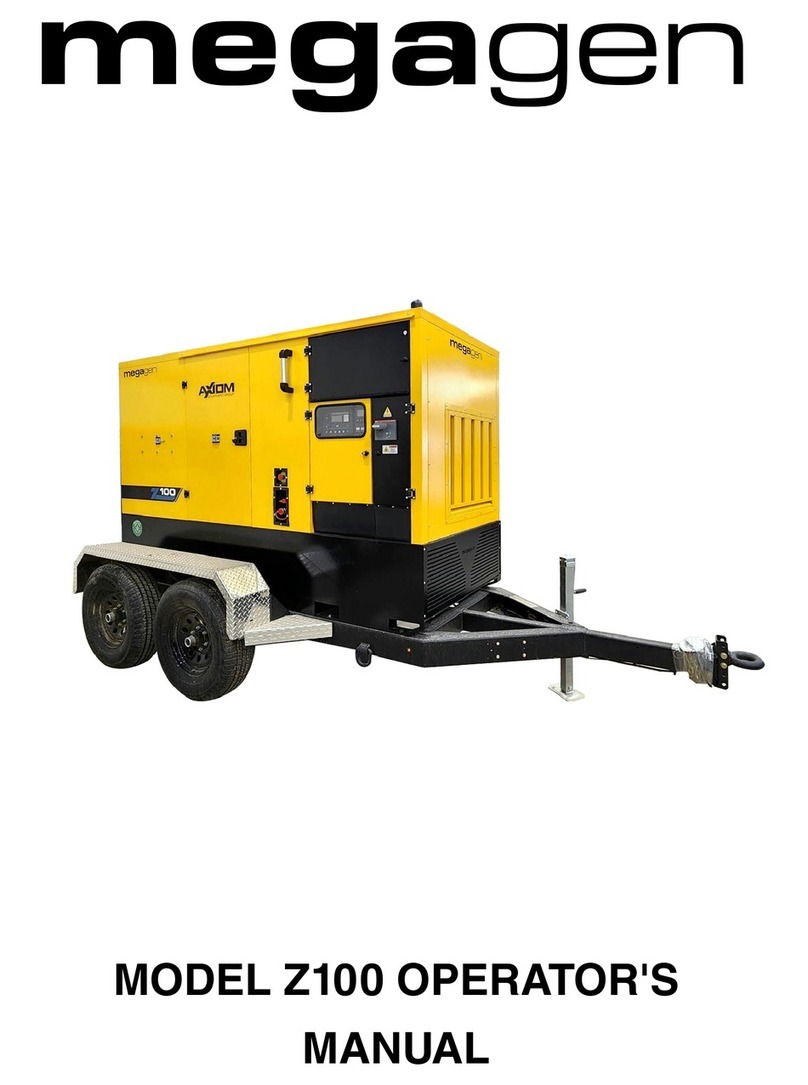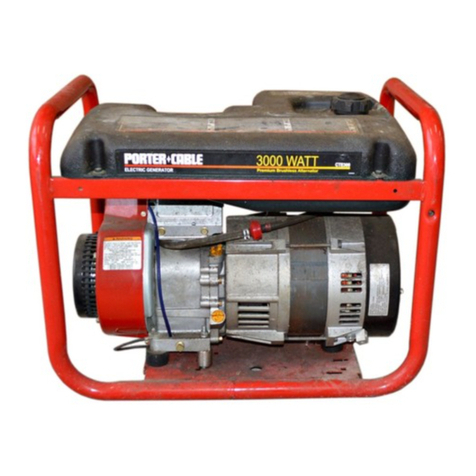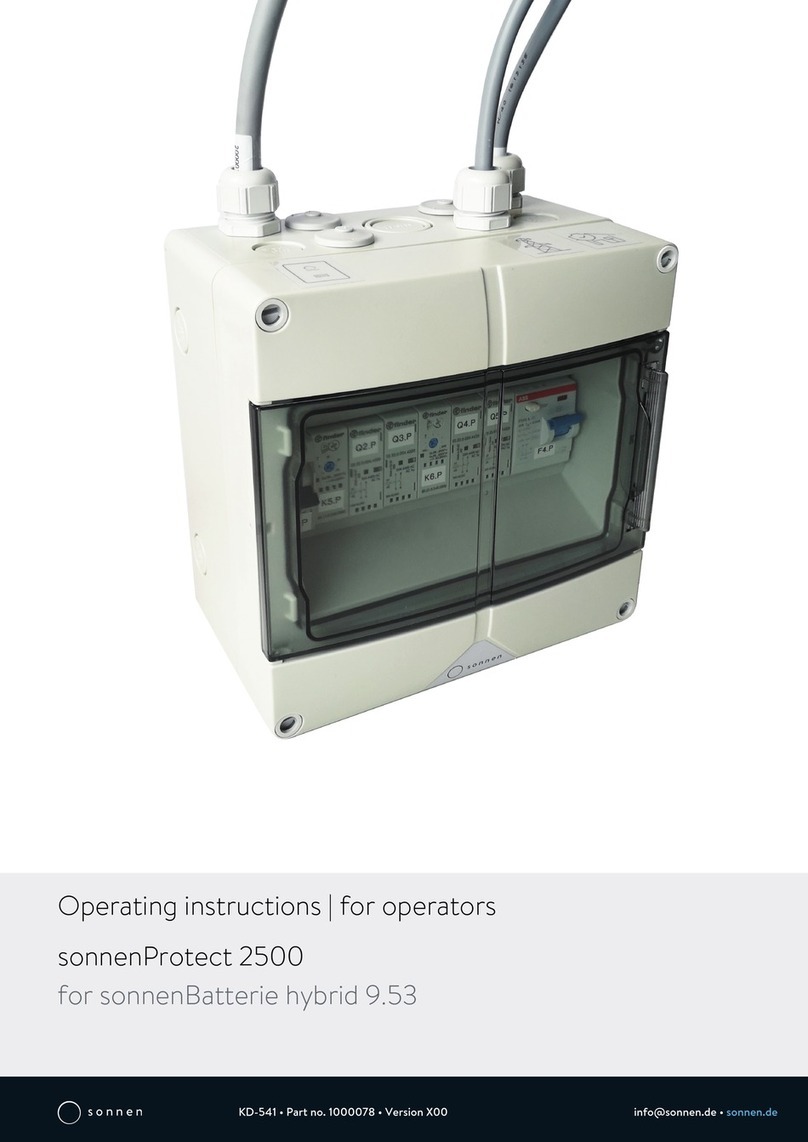Mech Marvels MM2350 User manual

MECH MARVELS
PORTABLE GENERATORS
MM2350/DF
MM4350/DF
MM8350DFE
MM9350E/DFE
INSTRUCTION MANUAL
READ ALL INSTRUCTIONS AND WARNINGS BEFORE USING THIS PRODUCT.
This manual provides important information on proper operation & maintenance. Every effort has been
made to ensure the accuracy of this manual. These instructions are not meant to cover every possible
condition and situation that may occur. We reserve the right to change this product at any time without
prior notice.
IF THERE IS ANY QUESTION ABOUT A CONDITION BEING SAFE OR UNSAFE,
DO NOT OPERATE THIS PRODUCT!
DO NOT RETURN THIS GENERATOR TO THE RETAILER
If you experience a problem, have questions, or need parts for this product, please call Customer Service at
1-800-832-2966 , Monday-Friday, 9 AM - 6 PM Central Time
. A copy of the sales receipt is required.
FOR CONSUMER USE ONLY NOT FOR PROFESSIONAL USE.
KEEP THIS MANUAL, SALES RECEIPT & APPLICABLE WARRANTY FOR FUTURE
REFERENCE.

NEED HELP? 1-800-832-2966
2
CARBON MONOXIDE
Using a generator indoors
CAN KILL YOU IN MINUTES
Generator exhaust contains carbon monoxide (CO). This is a poison you cannot see or smell. If you
can smell the generator exhaust, you are breathing CO. But even if you cannot smell the exhaust,
you could be breathing CO.
CALIFORNIA PROPOSITION 65
WARNING: This product, or the exhaust from this product, may contain chemicals known to
the State of California to cause cancer, birth defects, or other reproductive harm.
For more information, view OEHHA's Proposition 65 page: https://www.p65warnings.ca.gov

NEED HELP? 1-800-832-2966
3
Model MM2350/DF
This unit is a Gasoline or Gasoline/Propane Dual Fuel powered generator.
FEATURES:
•1500 Surge / 1200 Running Watts Output
•120VAC Operation
•3.0 HP Engine, 4 Stroke
•Displacement (CC): 94
•Low Oil Shut Off
•UL Listed Electrical Components
•Engine Shut Off Switch
•Spark Plug Model: Torch E7RTC or NGK BPR7HS
•1.5 Gallon Gasoline Fuel Tank
•Complies with EPA & CARB Emissions Standards
•Decibel Rating < 69 dB
•Run time =9hrs @ 50% load Gasoline
Power Outlets:
•(1)-12V DC Outlet
•(2)-120V Outlets
Model MM4350/DF
This unit is a Gasoline or Gasoline/Propane Dual Fuel powered generator.
FEATURES:
•4000 Surge / 3200 Running Watts Output
•120VAC Operation
•7.0 HP Engine, 4 Stroke
•Displacement (CC): 212
•Low Oil Shut Off
•UL Listed Electrical Components
•Engine Shut Off Switch
•Spark Plug Model: Torch F7RTC or NGK BPR6ES
•4 Gallon Gasoline Fuel Tank
•Complies with EPA & CARB Emissions Standards
•Decibel Rating < 70 dB
•Run time =10hrs @ 50% load Gasoline
•Propane Tank not included
Power Outlets:
•(1)-12V DC Outlet
•(4)-120V Outlets
•(1)-120V RV Outlet

NEED HELP? 1-800-832-2966
4
Model MM8350/9350E/DFE
This unit is a Gasoline or Gasoline/Propane(LPG) Dual Fuel powered generator.
FEATURES:
•7500 Surge / 6000 Running Watts Output (8350)
•9000 Surge / 7500 Running Watts Output (9350)
•120VAC Operation
•15 HP Engine, 4 Stroke
•Displacement (CC): 420
•Low Oil Shut Off
•UL Listed Electrical Components
•Engine Shut Off Switch
•Spark Plug Model: Torch F7RTC or NGK BPR6ES
•7.5 Gallon Gasoline Fuel Tank
•Complies with EPA & CARB Emissions Standards
•Decibel Rating < 73 dB
•Run time = 12hrs @ 50% load Gasoline (8350)
•Run Time = 11hrs @ 50% load Gasoline (9350)
Power Outlets:
•(1)-12V DC Outlet
•(4)-120V Outlets
•(1)-120V RV Outlet
•(1) 120/240V Outlet
For all MECH MARVELS Generators in this Manual:
Recommended Fuel types:
Unleaded Gasoline Only with Octane rating of 87 or higher, and no more than 10% Ethanol content.
Liquid Propane Gas (commonly referred to as LP, LPG, and Propane).
High Altitude Use: This generator is not recommended for high altitude use (above 3,000 feet) without adjustment to compensate for the decreased
airflow available.
If you want to use a propane tank larger than 20lbs, call Customer Service at 1-800-832-2966.
Surge/Running watts can be reduced by up to 10% when Propane Fuel is used instead of Gasoline.

NEED HELP? 1-800-832-2966
5
Table of Contents
SAFETY SYMBOLS, WORDS AND LABELS............................................................................................................................... 6
What You Need to Know About Safety Instructions........................................................................................................... 6
PACKAGE CONTENTS ............................................................................................................................................................. 10
GENERATOR COMPONENTS .................................................................................................................................................. 11
........................................................................................................................................................................................ 11
Control Panel Detail......................................................................................................................................................... 12
GENERAL ASSEMBLY INSTRUCTIONS .................................................................................................................................. 13
Installing Wheels and Support Feet................................................................................................................................. 13
PREPARING THE GENERATOR FOR USE.............................................................................................................................. 14
Using this Generator for the First-Time............................................................................................................................ 14
STARTING THE GENERATOR.................................................................................................................................................. 17
STARTING THE GENERATOR USING PROPANE................................................................................................................... 17
Switching from Gasoline to Propane................................................................................................................................ 17
Switching from Propane to Gasoline ............................................................................................................................... 17
Subsequent Use of this Generator .................................................................................................................................. 18
USING THE GENERATOR ........................................................................................................................................................ 18
DC USAGE................................................................................................................................................................................. 21
STOPPING THE GENERATOR ................................................................................................................................................. 21
MAINTENANCE/CARE .............................................................................................................................................................. 22
Recommended Maintenance Schedule........................................................................................................................... 22
Cleaning the Generator
................................................................................................................................................. 22
Changing/Adding Oil
...................................................................................................................................................... 23
Spark Plug Maintenenace................................................................................................................................................ 24
Air Filter Maintenance...................................................................................................................................................... 24
STORAGE/TRANSPORT PROCEDURES................................................................................................................................. 25
TROUBLESHOOTING
.............................................................................................................................................................. 26
SPECIFICATIONS...................................................................................................................................................................... 27
WARRANTY............................................................................................................................................................................... 29

NEED HELP? 1-800-832-2966
6
SAFETY SYMBOLS, WORDS AND LABELS
What You Need to Know About Safety Instructions
Warning and Important Safety Instructions appearing in this manual are not meant to cover all possible conditions and
situations that may occur. Common sense, caution and care must be exercised when operating or cleaning tools and
equipment.
Always contact your dealer, distributor, service agent or manufacturer about problems or conditions you do not understand.
This is the safety alert symbol. It is used to alert you to
potential personal injury hazards. Obey all safety
messages that follow this symbol to avoid possible
injury or death.
DANGER indicates an imminently hazardous situation
which, if not avoided, will result in death or serious injury.
WARNING indicates a potentially hazardous situation which,
if not avoided, could result in death or serious injury.
CAUTION indicates a potentially hazardous situation which,
if not avoided, may result in minor or moderate injury.
CAUTION used without the safety alert symbol indicates a
potentially hazardous situation which, if not avoided, may
result in property damage.
Legal Requirements:
Federal and/or State Occupational Safety and Health Administration (OSHA) regulations, local codes, and/or ordinances may apply to the intended use
of this generator. Consult a qualified electrician, electrical inspector, and/or the local agency having jurisdiction in your area. Some areas require
generators to be registered with local utility companies. Additional regulations may apply if this generator will be used at a construction site .

NEED HELP? 1-800-832-2966
7
IMPORTANT SAFETY INSTRUCTIONS
Before using this generator and if you have any questions regarding the hazard and safety notices listed in this manual and/or on this generator,
call 1-800-832-2966, Monday - Friday, 9 AM - 6 PM Central Time.
Carbon Monoxide Gas: When in operation, the exhaust from this generator contains poisonous carbon monoxide gas. Carbon monoxide gas is both
odorless and colorless and may be present even if you do not see or smell gas. Breathing this poison gas can lead to headaches, dizziness,
drowsiness, loss of consciousness and eventually death.
Use this generator ONLY outdoors in non-confined areas.
Keep at least several feet of clearance on all sides to allow for proper ventilation for this generator.
Powerful Voltage: This generator produces powerful voltage, which can result in electrocution.
Only electrical devices should be plugged into this generator, either directly or with an extension cord. NEVER connect a bui lding electrical system to
this generator without a qualified electrician completing the installation.
Doing so voids your warranty.
Such connections must isolate generator
power from utility power and comply with local electrical laws and codes. Failure to comply can create a back feed into utili ty lines creating an
electrocution hazard, which may result in serious injury or death. Such a back feed may cause this generator to explode, burn, and create fires when
utility power is restored.
Do not use this generator in wet conditions (rain, snow, active sprinkler systems, wet hands, etc.). Always keep this generator dry and operate it with dry
hands.
Do not touch bare wires or outlets (receptacles).
Do not allow childr
en or non-qualified persons to operate this generator.
High Temperatures: This generator produces heat when in operation. Temperatures near the exhaust can exceed 150° Fahrenheit (65° Celsius).
Do not touch hot surfaces. Observe all warning placards on this generator denoting hot surfaces.
Allow this generator to cool for several minutes after use before touching the engine, muffler, or other areas that are hot during operation and before storing or
transporting the generator.
Hot exhaust may ignite some materials. Keep flammable materials away from this generator.
Keep several feet of clearance on all sides of this generator during operation. Do not enclose this generator in any structure.
Usage: Avoid the use of extension cords if possible.
If you choose to use them, be sure they are sized adequately to handle the flow of
electricity. An undersized cord can overheat, short out and cause a fire.
Usage: Consult a physician(s) before using this generator if using a pacemaker.
Electromagnetic fields in close proximity to a heart
pacemaker could cause a pacemaker to malfunction or fail. Caution is necessary when near the engine, or when using the recoil starter.
Usage: Misuse of this generator can damage it or shorten its life.
•
Use this generator only for its intended purpose.
•
Operate this generator only on a dry, level surface.
•
Allow this generator to run for several minutes before connecting any electrical devices.
•
Promptly turn off any malfunctioning devices and disconnect them.
•
Do not operate an excessive number of electrical devices in excess of the wattage capacity of this generator.
•
Do not turn on electrical devices until
after
they are connected to this generator.
•
Turn off all connected electrical devices before stopping this generator.
Usage: Prolonged exposure to high noise levels can be hazardous to hearing.
Always wear ANSI-approved hearing protection when operating or
working around the generator when it is running.

NEED HELP? 1-800-832-2966
8
Propane Safety: Propane gas (also known as LPG, or PG) is a flammable liquid gas under pressure which can form explosive mixtures with air, and
cause other bodily harm if improperly handled.
In case of inhalation: Persons suffering from lack of oxygen should be immediately moved to fresh air. If a victim is not breathing, administer artificial
respiration. If breathing is difficult, administer oxygen. ALWAYS obtain medical treatment immediately for any breathing difficulties.
Contact with liquid propane or cold vapor can cause freezing of tissue (frostbite):
In case of eye contact: gently flush eyes with lukewarm, NOT HOT, water and seek medical attention immediately.
In case of skin contact: Contact with liquid or cold vapor can cause frostbite. Immediately immerse the affected area in warm water, not to exceed 105°F
(40°C).
Fire and Explosion Hazards: Propane gas (also known as LPG, or PG) is a flammable liquid gas under pressure which is easily ignited.
Propane is heavier than air: It can collect in low areas, or travel along the ground where an ignition source may be present. Pressure can also build up in
the container due to heat, and the container can rupture if the relief devices should fail to function.
Storage: Cylinders should be stored upright with valve protection in place. They should also be secured to prevent falling or tip-over. Protect cylinders from
physical damage, DO NOT drag, roll, slide or drop, and NEVER handle propane cylinders by the valve. Use a suitable hand truck or cart for cylinder
movement. Ensure all storage areas meet Class 1 Hazardous area standards, preferably outdoors, away from any source of ignition, with explosion proof
electrical enclosures, and posted “No Smoking or Open Flames” signs.
Fire and Explosion Hazards: Propane smells like rotten eggs, a skunk’s spray, or dead animal. IF YOU SMELL GAS, NO FLAMES OR SPARKS! Immediately
put out all smoking materials or other open flames. Do not use electrical devices such as lights, appliances, or cell phones—sparks from these sources can
trigger an explosion or fire. It can collect in low areas, or travel along the ground where an ignition source may be present. Pressure can also build up in the container
due to heat, and the container can rupture if the relief devices should fail to function.
Carbon Monoxide (CO): Carbon monoxide is a byproduct of combustion and is a VERY DANGEROUS gas. CO can come from ANY fuel burning
device. Very high levels of CO are possible from a device that is not operating properly, or from a chimney or venting system that is not functioning or
becomes blocked. CARBON MONOXIDE CAN BE DEADLY! High levels of CO can cause dizziness, lack of consciousness, brain damage, and
ultimately death.
Symptoms of CO Poisoning include: headache, dizziness, fatigue, shortness of breath, and nausea.
If you suspect CO is present, ACT IMMEDIATELY:
1: If you or anyone shows physical symptoms of CO poisoning, get everyone out of the area and call 911 or your local Fire Department.
2: If it is safe to do so, open windows and doors to allow fresh air in, and shut off any devices you suspect may be releasing CO.
3: If no one has symptoms, but you suspect that CO is present, call your propane retailer, or qualified service personnel to check CO levels and ensure
equipment is operating and being vented properly.
Propane (LPG) as your Fuel Source: This generator may emit highly flammable and explosive vapors when using LPG as the fuel source. Any nearby
flame source could cause an explosion resulting in bodily harm or even death.
Do not operate this generator near any open flame.
Always operate this generator on a firm, level surface.
Before starting this generator, inspect the LPG tank and valves for damage or leaks. You can use soapy water to spray the connections and look
for bubbles indicating a leak. Attach only approved tanks that have been properly filled by an approved filling station. DO NOT light or smoke
cigarettes.
Replace the hose at the first sign of cracks or leaks, or if age-cracking becomes apparent.
Always handle Propane fuels and generators outdoors.
Before transporting, disconnect the tank and close all valves. Ensure the generator fuel valve is off, and disconnect the spark plug.

NEED HELP? 1-800-832-2966
9
In addition to the previously described safety information, familiarize yourself with all safety and
hazard notices on this generator
:

NEED HELP? 1-800-832-2966
10
PACKAGE CONTENTS
The following items are supplied with MECH MARVELS Portable Generators. Verify that all items are included.
STOP!
If there are missing items,
call 1-800-832-2966 Monday - Friday, 9 AM - 6 PM Central Time
for customer service.
DO NOT RETURN THIS
GENERATOR TO THE RETAILER.
Item List:
Set of 2 DC connector wires for charging 12 Volt automotive-type batteries
Spark plug wrench
Funnel for adding Oil
5 Ft. Regulator Hose Kit (Dual Fuel Units only)
(YOU MUST USE THE SUPPLIED REGULATOR FOR SAFE OPERATION)

NEED HELP? 1-800-832-2966
11
GENERATOR COMPONENTS
Observe the locations and functions of the various components and controls of this generator.
5. Fuel Valve: Turn this valve to the “on”
position to supply fuel to the engine.
6. Fuel Tank
7. Control Panel
8. Choke: Used to start the engine.
9. Air Filter: Protects the engine by filtering dust
and debris from the intake air.
1. Recoil Starter: Used to start the engine.
2. Low Oil Shutdown: Senses the level of oil in
the crankcase and shuts the engine down if
the level falls to low.
3. Oil Filler Cap/Dipstick: Used to check and fill
the engine oil.
4. Propane Inlet: Used to connect a propane fuel
source to the generator.

NEED HELP? 1-800-832-2966
12
Control Panel Detail
1.
Engine On/Off/Start Switch
7.
Propane(LPG) Inlet
2.
DC Circuit Breakers
8.
120V RV Outlet
3.
AC Circuit Breakers
9.
Voltage Meter
4.
Ground Terminal
10.
120V GFCI Duplex Outlets
5.
120V Duplex Outlets
11.
120/240VAC Twist Lock Outlet
6.
12V DC Connector
120VAC Duplex outlets are protected by 20A Circuit Breakers
Each Duplex Outlet supports up to 2400 Watts
120VAC RV Outlet is protected by 30A Circuit Breaker
Each RV Outlet supports up to 3600 Watts
120/240VAC Twist-Lock Outlet is protected by 30A Circuit Breakers on each 120VAC leg
Twist-Lock Outlet will support up to 7200 Watts with a 4 wire connection
This generator supports 120/240VAC/60Hz Loads only!

NEED HELP? 1-800-832-2966
13
GENERAL ASSEMBLY INSTRUCTIONS
Installing Wheels and Support Feet
1. Before adding oil or fuel, install the
wheels and feet on Model 4350/DF,
8350DFE, 9350E/DFE.
2. Carefully tip the generator
backwards when looking at the
control panel and insert the support
feet under the frame.
3. Resting the generator on the feet,
use the included 6mm nuts and
bolts to attach them to the frame.
4. Prepare one of the wheels by
inserting the axle bolt and sliding a
bushing in place.
5. Carefully lift the rear of the
generator and slide the assembly
into the frame bracket. Secure the
axle bolt with the included lock nut.
6. Install the wheel on the opposite
side following instructions 4 and 5.
7. The handle can now be unfolded as
well by removing the safety
securing pin and lifting the handle
upward.
8. Secure the handle in the open
position by re-inserting the safety
locking pin.
9. Connect the battery cables to the
battery for electric start if equipped;
red ended cable to the positive (+),
and black ended cable to the
negative(-).

NEED HELP? 1-800-832-2966
14
PREPARING THE GENERATOR FOR USE
Using this Generator for the First-Time
STOP!
The following section describes the required steps for preparing this generator for the first use. Failure to correctly perform these steps
can damage this generator and/or shorten its life. If you are still unsure about how to perform any of these steps after reading this
section, call 1-800-832-2966 Monday - Friday, 9 AM - 6 PM Central Time for customer service.
If this generator is being used for the first time, the following steps are required to prepare it for operation:
Step 1 - Add Oil
This generator requires engine oil to function. Engine oil is a major factor affecting engine performance and service life.
When new from the
package, this generator contains no oil in the engine crankcase. Add the correct quantity of oil before operating this genera tor for the first time. When
replenishing oil for subsequent use of this generator, always ensure that this generator has the correct quantity of oil.
Model MM2350/DF Oil Capacity
13.5 Ounces
Model MM4350/DF Oil Capacity
18.6 Ounces
Model MM8350DFE/9350E/9350DFE
28.7 Ounces
Oil Type Recommended for All Models
High Detergent Motor Oil, SAE10W-30
To add oil:
1.
Confirm that the generator is on a level surface.
2.
Unscrew the oil filler/dipstick cap from the engine as illustrated in Figure 1.
3.
Using a funnel, add high detergent motor oil to fill the engine crankcase to the correct level. SAE10W-30 oil is recommended for general, all-
temperature use.
When the engine crankcase is full, the oil level should reach all the way up to the top of the threads
as illustrated in
Figure 2.
4.
Replace the oil filler/dipstick cap.
Figure 1- Oil Filler/Dipstick Figure 2-Add oil to the top of threads

NEED HELP? 1-800-832-2966
15
Step 2 –Fueling
Add Unleaded gasoline only with an octane rating of 87 or higher.
Maximum Capacity: 1.5 Gallons (MM2350/DF)
4 Gallons (MM4350/DF)
7.5 Gallons (MM8350/9350E/DFE)
Or attach a 20lb LPG cylinder using the supplied regulator assembly
WARNING:
YOU MUST USE THE SUPPLIED REGULATOR FOR SAFE OPERATION WHEN
USING LPG AS THE FUEL SOURCE
Step 3 - Ground the Generator
Ground this generator by tightening the grounding nut against a grounding wire as illustrated in Figure 3. Number 6 AWG (American Wire Gauge)
stranded copper wire is generally an acceptable grounding wire. The other end of this grounding wire should be connected to a copper or brass
grounding rod that is driven at least 24 inches into the earth.
Grounding codes can vary by location. Contact a local electrician for information on grounding regula tions for your area.
Figure 3 - Attaching the Grounding Wire to this Generator
Attach Ground here

NEED HELP? 1-800-832-2966
16
Pre-Operation Check List
Step 1 Check that the gasoline supply is in good condition, or check that the LPG inlet connection is secured tightly and not leaking. Turn the fuel valve
to “on” for gasoline, or open the valve for LPG.
Step 2 Make certain the CHOKE VALVE is at CHOKE (CLOSED) position. The generator may be hard to start if CHOKE VALVE is at the
RUN (OPEN) position.
Step 3 Ensure engine oil is full.
Step 4 Make sure GROUND TERMINAL is properly grounded.
Step 5 Check AC OUTPUTS and ensure no load is connected.
Disconnect all electrical loads from the generator set before starting the engine. The generator may be hard to start if a load is connected.
Step 6 Check DC OUTPUT and ensure no load is connected.

NEED HELP? 1-800-832-2966
17
STARTING THE GENERATOR
STOP!
Before starting this
correctly completed. If unsure about how to perform any of these steps, call 1-800-832-2966 Monday - Friday, 9 AM - 6 PM Central Time for
customer service.
Step 1 Make sure unleaded gasoline fuel has been added to the tank.
Step 2 Turn ENGINE SWITCH to the ON position.
Step 3 Move the CHOKE to CHOKE (Closed) position.
Step 4 For recoil start: Pull the STARTER GRIP slowly until resistance is felt and then pull rapidly. After the engine has started, return the
STARTER GRIP gently to prevent damage to the starter or housing. DO NOT allow the starter grip to snap back , return it slowly by hand.
For electric start, push the ignition switch to the start position and hold until the engine starts. Once started, immediately release the
switch. If engine doesn’t start within 5-10 seconds, stop and allow the starter to cool. Check generator settings before trying again.
Step 5 Set the CHOKE to the RUN (Open)position.
Choke Valve
The choke is used to provide an enriched fuel mixture when starting a cold engine. It can be opened and closed by operating it manually. Slide the
knob towards CLOSED to enrich the mixture for cold starting. The choke is not needed to start a warm/hot engine.
STARTING THE GENERATOR USING PROPANE
Operate the generator in a well ventilated area.
Do not connect any electrical devices to the generator prior to starting the engine.
1. Make sure the fuel valve is in the “OFF” position.
2. Make certain the propane hose is properly connected to the generator.
3. Connect the regulator to the LPG fuel supply and open the LPG supply valve. ENSURE THERE ARE NO LEAKS!
4. Leave the unit un-choked unless temperatures are below freezing.
5. Turn the engine power switch to its “ON” position.
6. Pull on the starter slowly, until resistance is felt, then pull it briskly. For electric start models, engage the start switch until the engine starts.
7. After the engine starts, allow it to warm up to operating temperature. If the choke was necessary, it will generally need opened immediately after starting
when using propane.
8. Proceed to connect desired electrical devices. Do not exceed generator capacity. Keep in mind power output can be reduced by up to 10% when using
propane as the fuel source.
Switching from Gasoline to Propane
1. Disconnect all load from the generator.
2. Make sure all propane hoses are properly connected, and there are no leaks.
3. While the unit is running on gasoline, turn the fuel valve to “OFF”.
4. When the generator starts to sputter/stumble, open the valve on the propane tank. Reconnect electrical loads when the generator is running smoothly.
Switching from Propane to Gasoline
1. Disconnect all load from the generator.
2. While the unit is still running, open the gasoline fuel valve.
3. Immediately close the valve on the propane tank.
4. Reconnect the load when the generator is running smoothly.

NEED HELP? 1-800-832-2966
18
Subsequent Use of this Generator
For subsequent uses of this generator after the first use, certain steps still must be completed to prepare it for operation.
of this
manual. If not, review this section now.
Step 1 - Verify Oil Level
Even though this generator is equipped with an automatic shutoff to protect it from damage due to low oil, it is important to check the oil level in the
engine crankcase before each use to ensure that there is sufficient quantity.
1.
Verify that this generator is on a level surface.
2.
Unscrew the oil filler/dipstick cap from the engine.
3.
With a dry cloth, wipe the oil off of the dipstick that is located on the inside of the cap.
4.
Fully insert the dipstick without screwing the filler/dipstick cap and then remove again. There should be oil on the dipstick . If there is no oil on the
g/Add
5.
Confirm that the oil filler/dipstick cap is properly screwed in place when finished verifying the oil level.
Step 3 - Ground the Generator
Ground this generator by tightening the grounding nut against a grounding wire as previously illustrated in Figure 3. A gener ally acceptable grounding
wire is a No. 6 AWG (American Wire Gauge) stranded copper wire. The other end of this grounding wire should be connected to a copper or brass
grounding rod that is driven into the earth. Grounding codes can vary by location. Contact a local electrician for informatio n on grounding regulations for
your area.
USING THE GENERATOR
After the engine has been running for several minutes, electrical devices may be connected to this generator.
AC Usage
Electrical devices running on AC current may be connected according to their wattage requirements. The rated (running) and su rge wattage:
Model MM2350/DF Rated (Running)/ Surge Wattage
1200/1500
Model MM4350/DF Rated (Running)/ Surge Wattage
3200/4000
Model MM8350DFE Rated (Running)/ Surge Wattage
6000/7500
Model MM9350E/DFE Rated (Running)/ Surge Wattage
7500/9000
The
rated (running) wattage
corresponds to the maximum wattage a generator can output on a continuous basis.
The
surge wattage
corresponds to the maximum amount of power a generator can output for a short time. Many electrical devices, such as a
refrigerator, require short bursts of extra power for starting and stopping fan motors, etc., in addition to their listed rat ed wattage. Motorized devices
typically require more than their rated wattage for startup. The surge wattage ability of a generator allows for this extra power requirement.
The total running wattage requirement of the electrical devices connected to a generator should not exceed the rated wattage of the generator itself. To
calculate the total wattage requirement of the electrical devices to be connected, look up the rated (running) wattage of each device and add these
numbers together to find the total wattage that all of the devices together will draw from the generator. If the total wattag e of the selected devices
exceeds the rated wattage of the generator, DO NOT connect all of the devices. Select a combination of the electrical devices tha t will have a total
wattage less than or equal to the rated wattage for the generator.
Ensure appliances connected to the generator are designed to operate within
+/- 10% of the rated voltage, and +/- 3% Hz of this generator’s rated frequency output, otherwise damage could result
.

NEED HELP? 1-800-832-2966
19
SOME NOTES ABOUT POWER CORDS
Long or thin cords can require more wattage from a generator to power an electrical device. Figure 7 shows the recommended cords according to the
power requirement of the electrical device. When using cords that exceed these specifications, allow for the electrical devic e to have a slightly higher
rated wattage requirement.
Device Requirements
Max. Cord Length (ft) by Wire Gauge
Amps
Watts (120V)
Watts (240V)
#8 wire
#10 wire
#12 wire
#14 wire
#16 wire
2.5
300
600
NR
1000
600
375
250
5
600
1200
NR
500
300
200
125
7.5
900
1800
NR
350
200
125
100
10
1200
2400
NR
250
150
100
50
15
1800
3600
NR
150
100
65
NR
20
2400
4800
175
125
75
50
NR
25
3000
6000
150
100
60
NR
NR
30
3600
7200
125
65
NR
NR
NR
40
4800
9600
90
NR
NR
NR
NR
NR = Not Recommended.
Figure 7 - Maximum Extension Cord Lengths by Power Requirement
A device's rated (running) wattage should be listed somewhere on the device itself and/or in its manual. If the wattage speci fication for a device is not
available, the wattage can be calculated by multiplying the Voltage requirement (120 or 240) by the Amperage drawn.
Watts = Volts x Amperes
Or, the wattage required by a device can be estimated by using the following chart (see Figure 8). The chart provi des only estimates and it is better to
know the exact wattage of each electrical device to be powered by this generator.
Electrical Device
Rated (Running) Watts
Additional Surge Watts
air compressor (1 HP)
1500
3000
air compressor (1 - 1/2 HP)
2500
2500
airless sprayer (1/3 HP)
600
1200
box fan
300
600
clock radio AM/FM
300
0
coffee maker
1500
0
computer w/17 inch monitor
800
0
deep freezer
500
500
electric drill (1/2 HP)
1000
1000
DVD/CD player or VCR
100
0
furnace fan blower (1/2 HP)
800
1300
garage door opener (1/2 HP)
480
520
hot plate
2500
0
light bulb (75 watt)
75
0
microwave oven (1000 watt)
1000
0
quartz halogen work light
1000
0
refrigerator/freezer (18 Cu. Ft.)
800
1600
saw - circular (7 1/4 inch)
1500
1500
saw - miter (10 inch)
1800
1800
saw - reciprocating
960
1040
security system
180
0
electric stove - single element
1500
0
sump pump
800
1200
television (27 inch color)
500
0
electric water heater (40 gallon)
4000
0
window air conditioner (10000 BTU)
1200
1800
window fan
300
600
Figure 8 - Estimated wattage requirements for common electrical devices.

NEED HELP? 1-800-832-2966
20
Connect electrical devices to this generator according to the following procedure:
1.
Allow the engine to run for several minutes after it has been started.
2.
Confirm that the electrical device is switched off prior to plugging it into this generator.
NOTE:
While this generator is running, power is available from either the standard 120 Volt outlets or the 12 Volt DC outlet. Both 120 Volts and 12V
can be simultaneously drawn from this generator.
3.
Turn on the connected electrical devices beginning with the device with the highest rated wattage requirement and then each additional device with
the next lower rated wattage requirement.
Figure 9-- Sample outlets available on these generators
This manual suits for next models
6
Table of contents
Other Mech Marvels Portable Generator manuals
Popular Portable Generator manuals by other brands

Clarke
Clarke WLD180 Operation & maintenance instructions
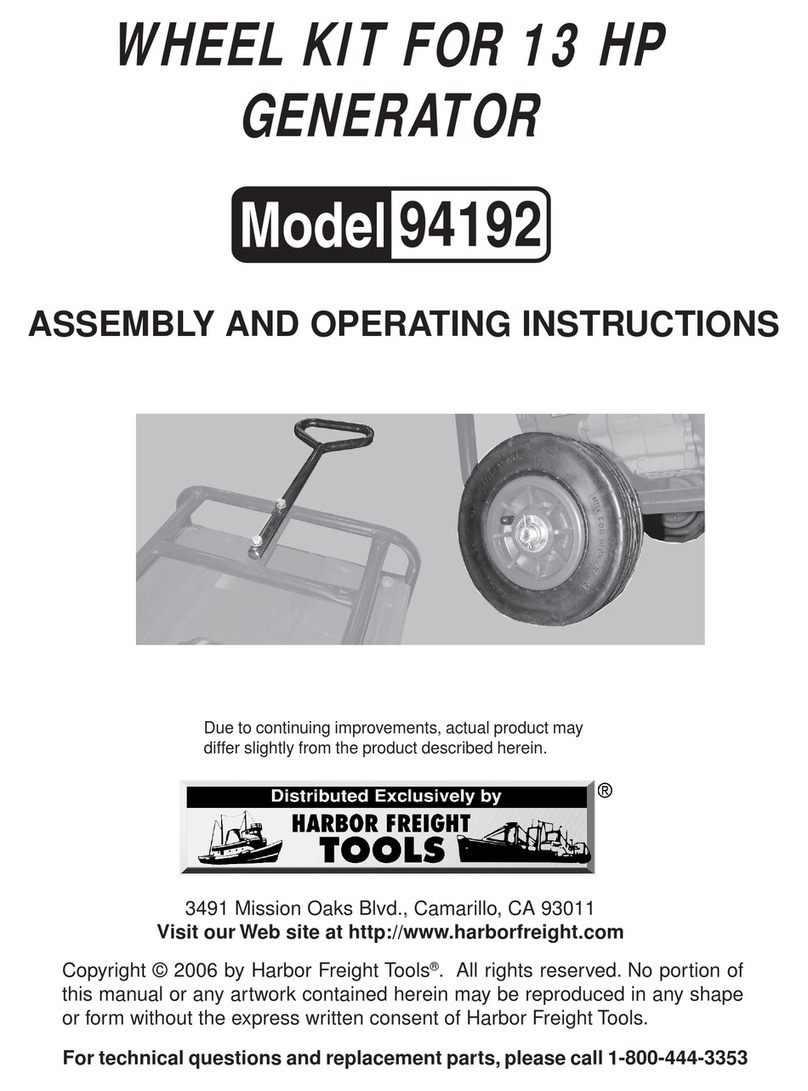
Harbor Freight Tools
Harbor Freight Tools 94192 Assembly and operating instructions
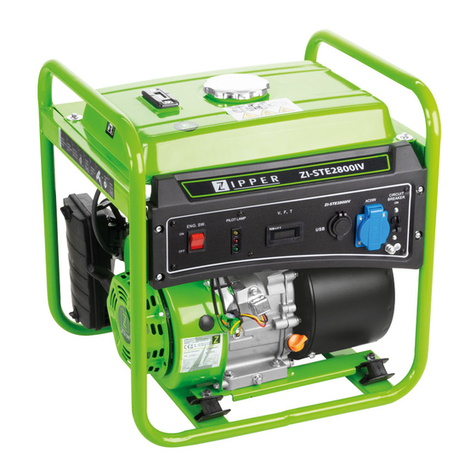
Z.I.P.P.ER MASCHINEN
Z.I.P.P.ER MASCHINEN ZI-STE2800IV user manual

Instruo
Instruo SCION user manual
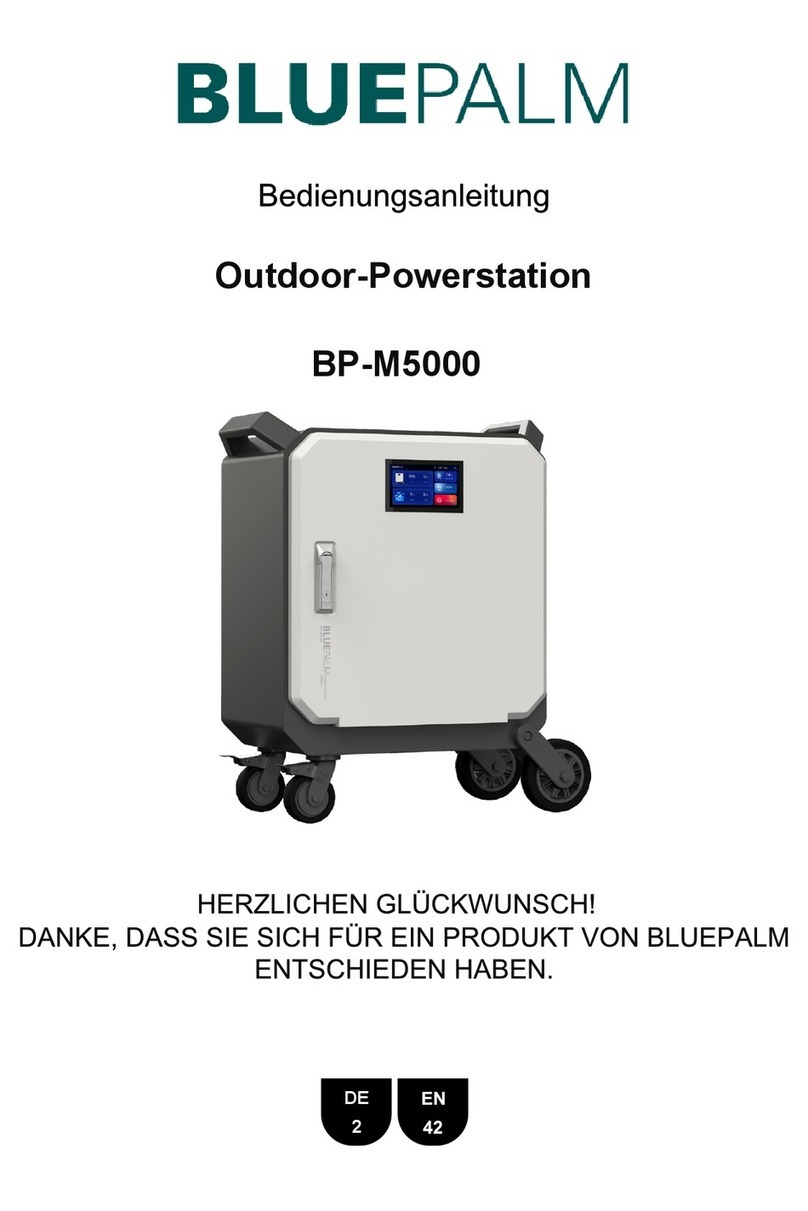
BLUEPALM
BLUEPALM Powerstation 5000 operating instructions
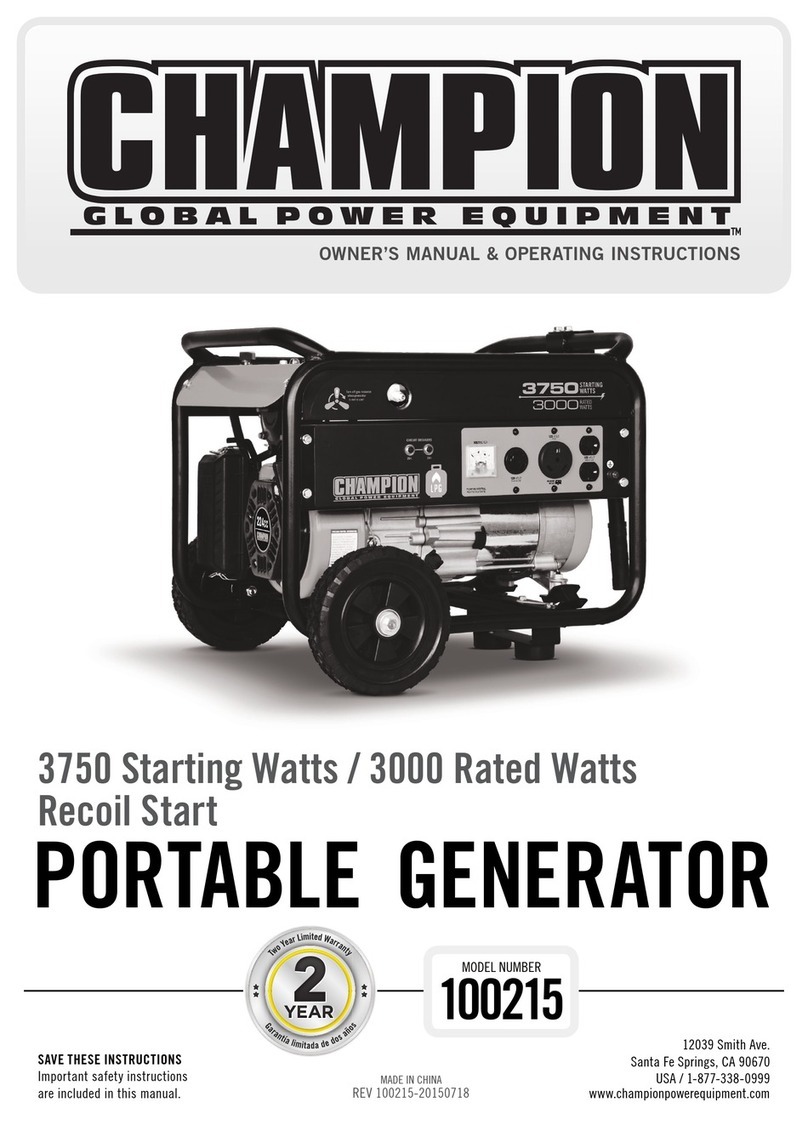
Champion
Champion 100215 owner's manual
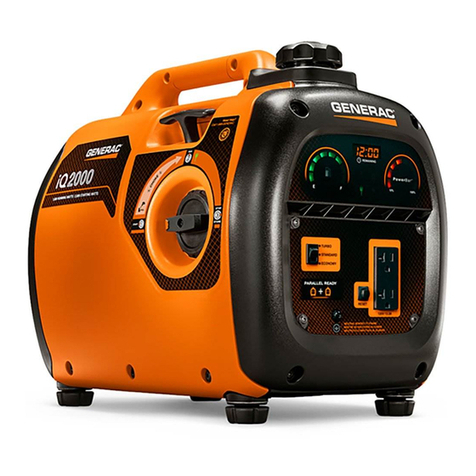
Generac Portable Products
Generac Portable Products iQ2000 owner's manual
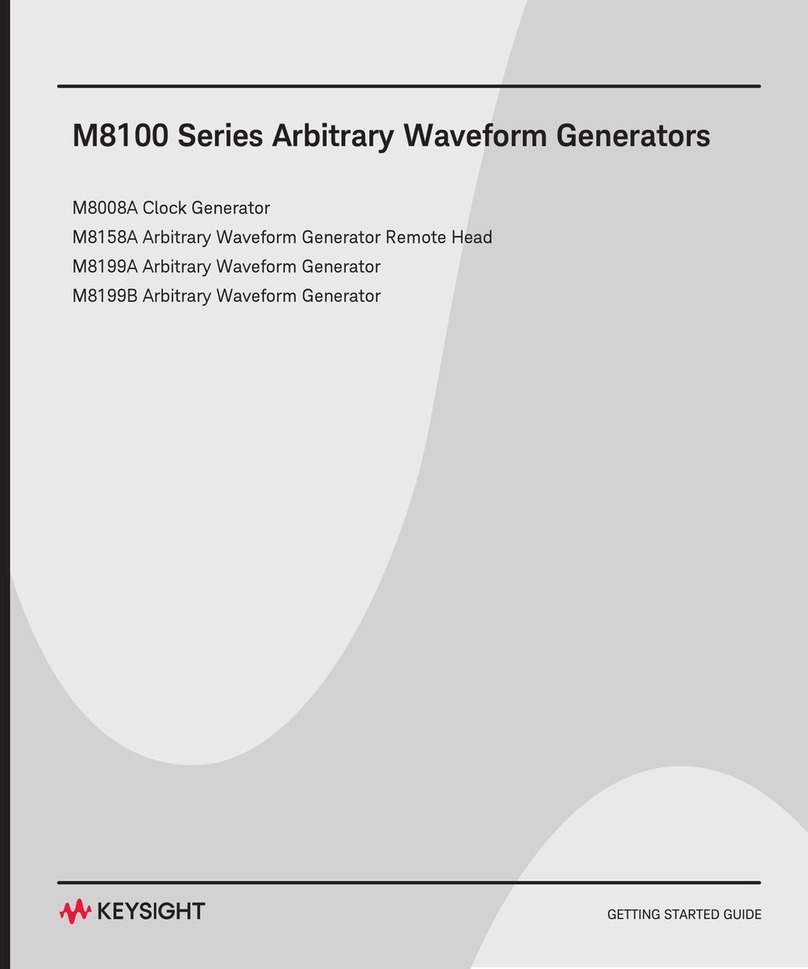
Keysight
Keysight M8100 Series Getting started guide
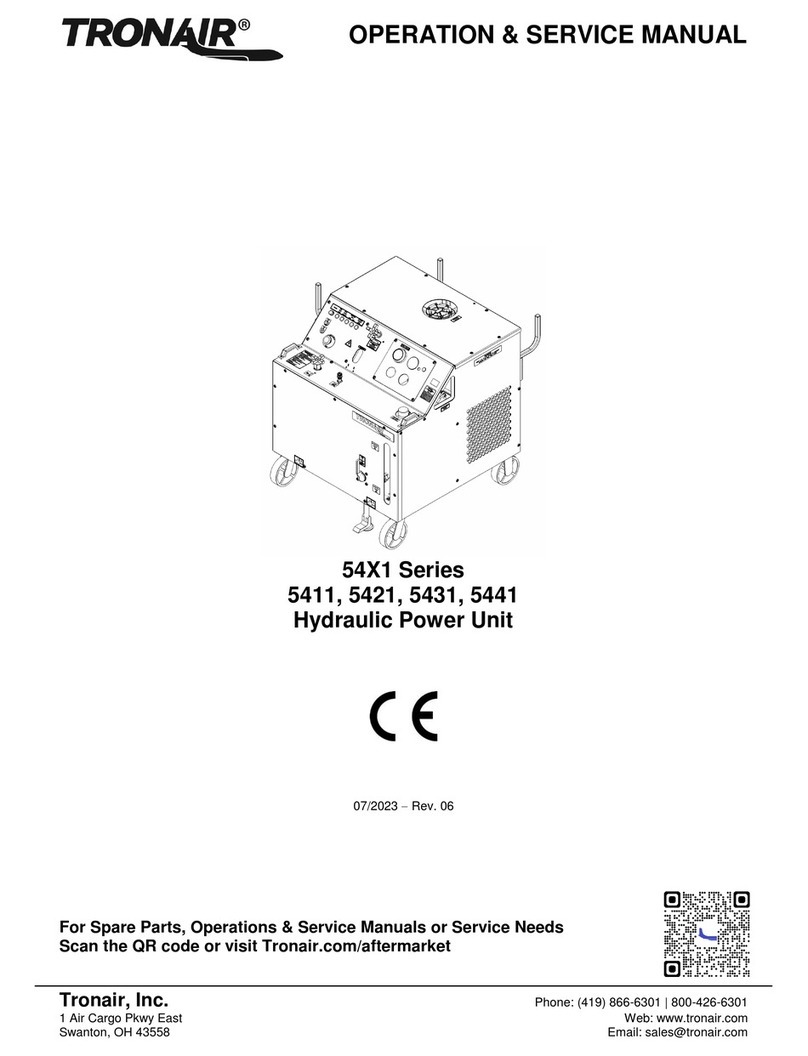
Tronair
Tronair 54 1 Series Operation & service manual
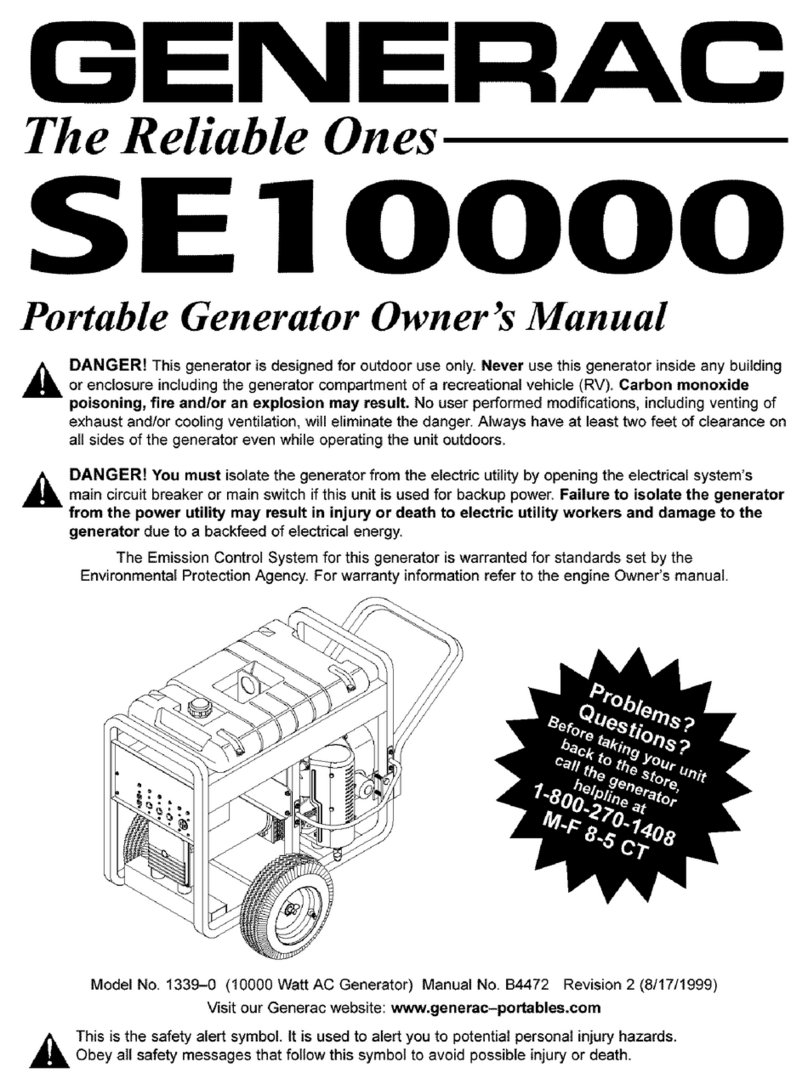
Generac Power Systems
Generac Power Systems SE10000 owner's manual
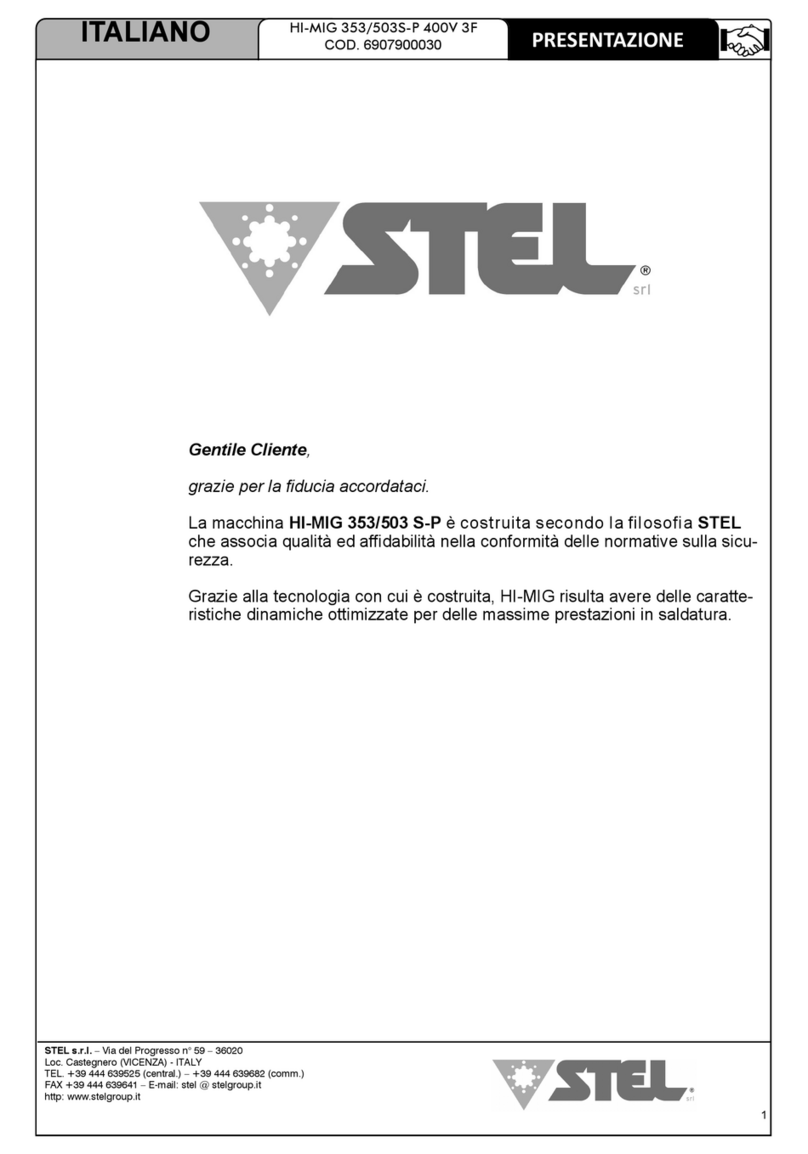
Stel
Stel HI-MIG 353 S-P manual

Power
Power SUA8000iE owner's manual

